Copenhagen, Denmark. Explore communities that advocate anarchism, think about “self-management,” and goals of existing society.
When thinking of Denmark, you probably think of a small Scandinavian country, Vikings, football, and dairy farming. By definition, Scandinavia includes Norway, Sweden, Finland, Denmark and Iceland, but Denmark may be the least well-known of these five countries.
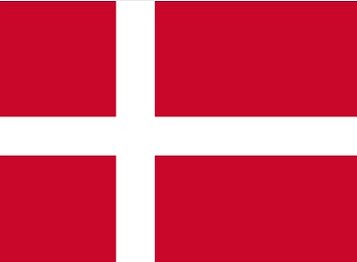
Personally, I had the opportunity to visit four of the five Nordic countries for business and private purposes, but Denmark was the last. This may be due to the lack of popularity mentioned above. When I imagine Denmark and its capital, Copenhagen, I could not see the purpose of visiting.
The capital of Denmark is Copenhagen, and I personally have a radical image. That is because I once saw an article about how young people are becoming more right-wing and the number of young people addicted to drugs is increasing. This image remained in the back of my mind, but one day I learned that there was a place called Christiania in Copenhagen, which I describe below, and connected with the above-mentioned “radical image”, and therfore I decided to visit.
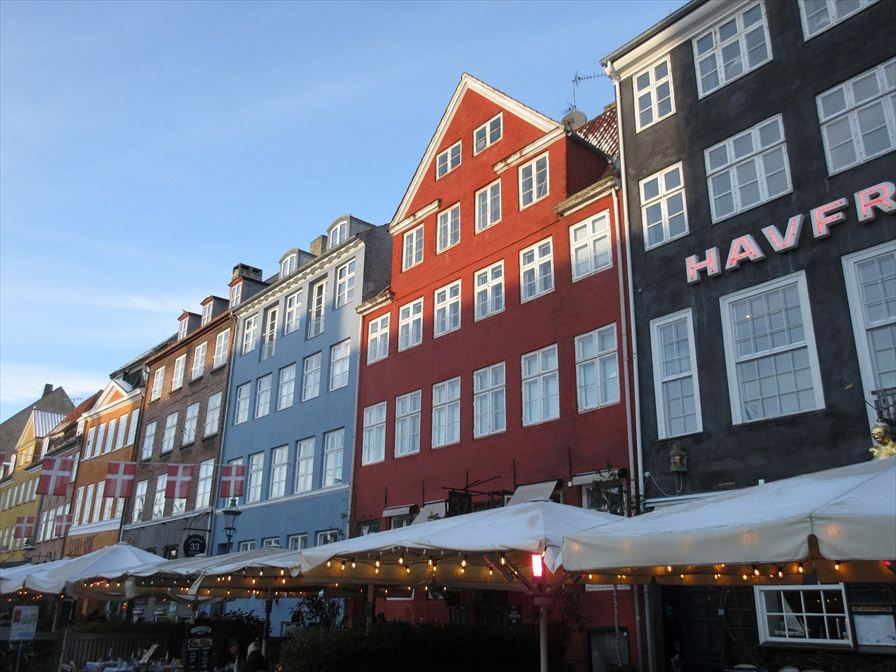
Christiania is in Copenhagen. It is just a few subway stops from Copenhagen’s most prosperous central station and Strøget street. So, what is this place? This is a place where people who advocate anarchism live. It is a so-called anarchist place. There are 850 residents and 34 hectares of land.
Military originally owned this place, but after the military withdrew, homeless people gathered there, and when it opened to the public in 1971, it became a paradise for hippies and squatters, and developed into an anarchist place. To give you an easy-to-understand example, marijuana was legal until 2004, and although it is now illegal, marijuana is still being sold and bought on the premises.
Anyone can enter the premises. Nowadays, it seems to have an aspect as a tourist destination in Copenhagen. There are walking tours organized by Christiania at this location. I joined this tour. I would like to introduce this content.
The closest metro station is Christianshavn. It is less than 10 minutes walk from this station. Walk a little south down the street called Tobvegade and go east along the intersecting street called Princesessegade. It is different from the downtown area in the center of Copenhagen, but it feels like a normal city landscape. After walking down Prinsessegade for about 5 minutes, Christiania’s premises are on the right side of the intersection.
There is a sidewalk that enters the site from the corner of this intersection. As continuing along this sidewalk, there is a three-story building on left that continues for about 100 meters. If walking along the side of this building to the farthest end, there is a sidewalk leading into Christiania on right. There is a gate at the entrance at this place. Outside the gate is the above-mentioned Princessgade Street, and if looking from this street side, you can see the words “CHRiSTiANiA” written on it, therefore this must be the official entrance.
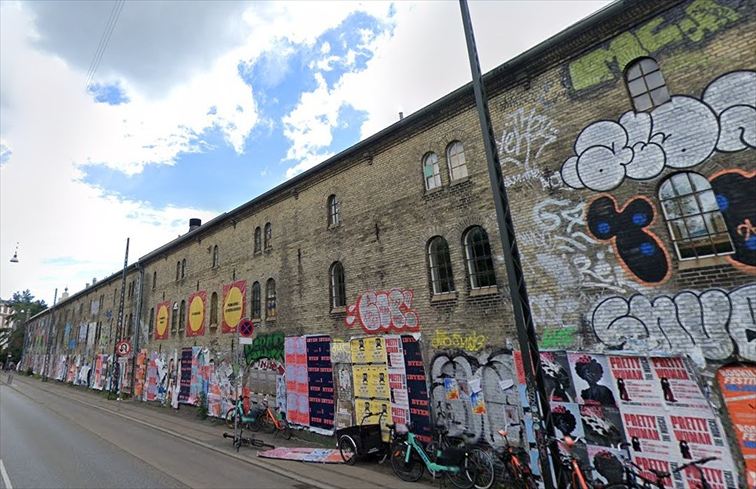

On the back of the sign at this gate that reads “CHRiSTiANiA,” there is a statement that says, “you are now entering the EU.” Since Denmark is a member of the EU, it has declared that it is “outside EU governance.” This place is an autonomous region separate from the Danish government and operates under its own rules.
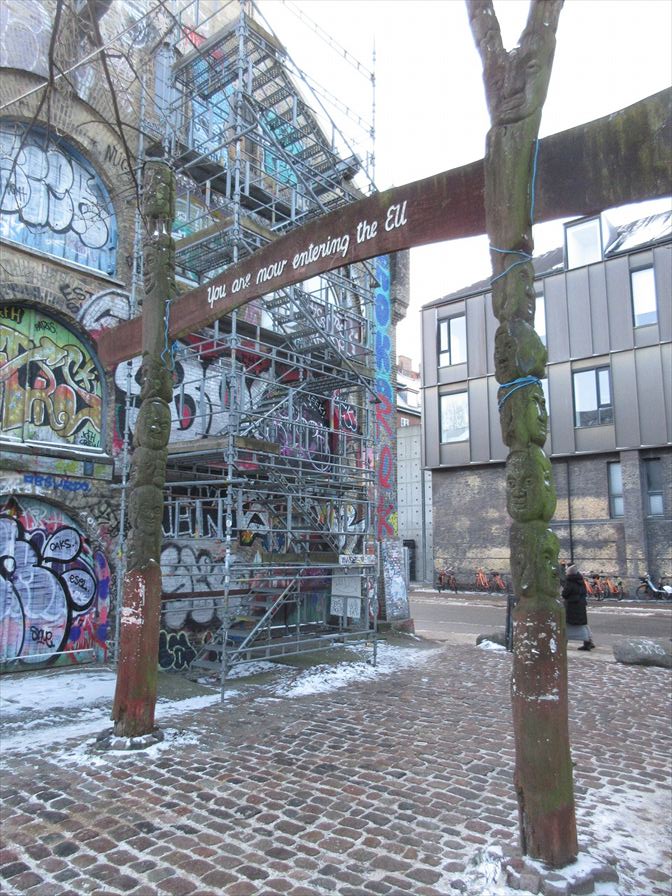
Standing in front of this gate, I could see that people are coming and going as usual. Looks like there are a lot of young people. There are a couple of stones in front of the gate to prevent cars from entering.
The tour starts in front of the three-story building, facing the gate. The building faces Prinsessegade Street, but there is no entrance on the street side, only on the side facing the Christiania site. Tour participants gathers before the scheduled time, and when the time comes, guided person appears.
Participants move to the third floor of the building. There is a gallery and a cafe there, where participants sit on a chair and pay the guide fee to the guide. The guide’s explanation begins. When I attended, there were about 10 participants. The guide explained the location, history, and current situation of Christiania. There was a talk that residents are currently paying taxes and unemployment rate is high.
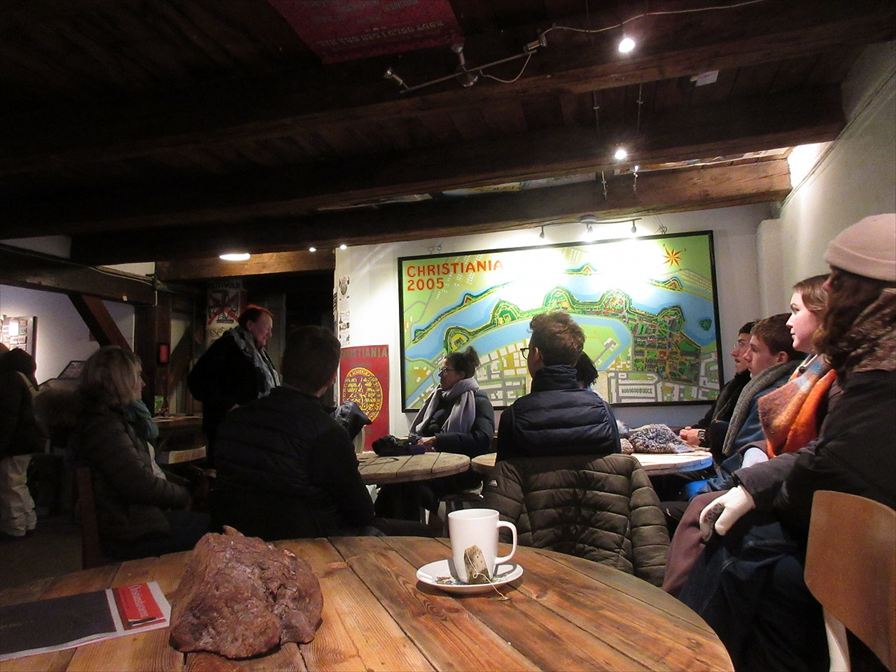
As a side note, there are stairs leading up to the third floor after entering the building and walls along the way covered in paint and graffiti. There is a live house called “Loppen” on the 2nd floor, and the area around the entrance door on the 2nd floor was especially well-painted and graffitied. It must be a live house with a long history. At this live house, Japanese artists such as the female rock band “Shonen Knife” performed. It seems to be a scheduled location for a European tour. Unfortunately, it was mid-winter when I visited, so it was closed.
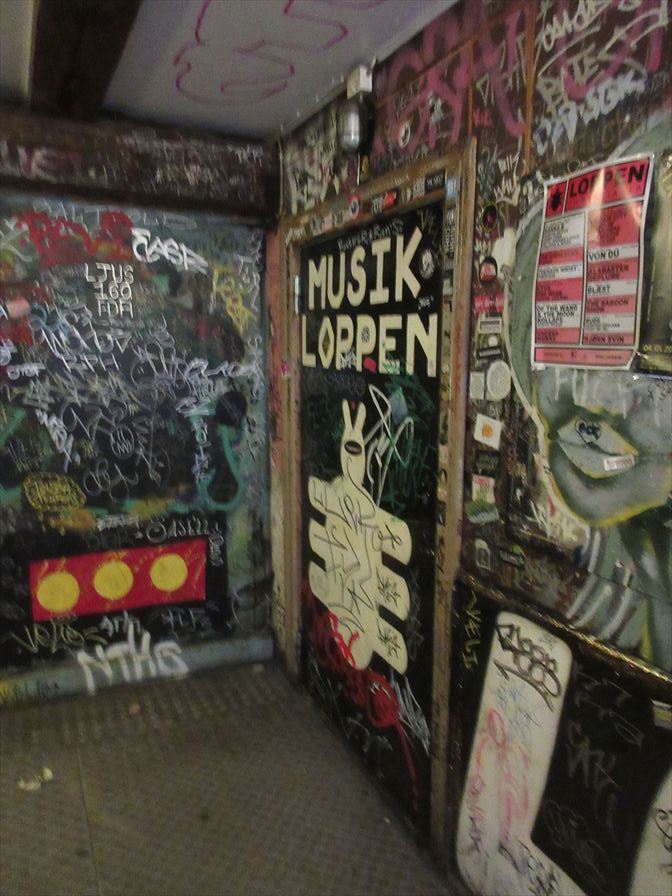

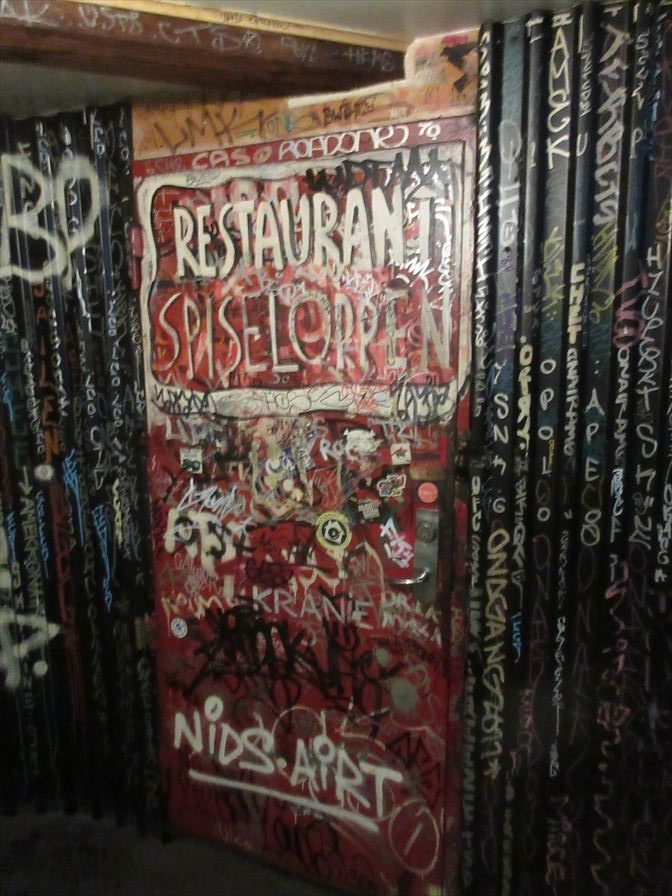
Well, the tour involves walking around the site for about an hour, and suddenly arrive at the place that makes Christiania famous. This place locates about 100m from the gate. There is a slightly larger area with stalls lined up. This is a place, “Pusher Street”. Marijuana (cannabis) is sold.
There are 5-6 stalls, and a man stands in front of each stall made of wood. The man dressed in black and face hidden. Perhaps because it was winter and it was cold, a fire lit near the stalls. The moment I entered this place, I felt a change in the atmosphere. It is full of suspicious atmosphere. I have been to places with a somewhat suspicious atmosphere, but for the first time in a while, I felt like I was in danger. I may be biased, but this place did not feel like Europe.
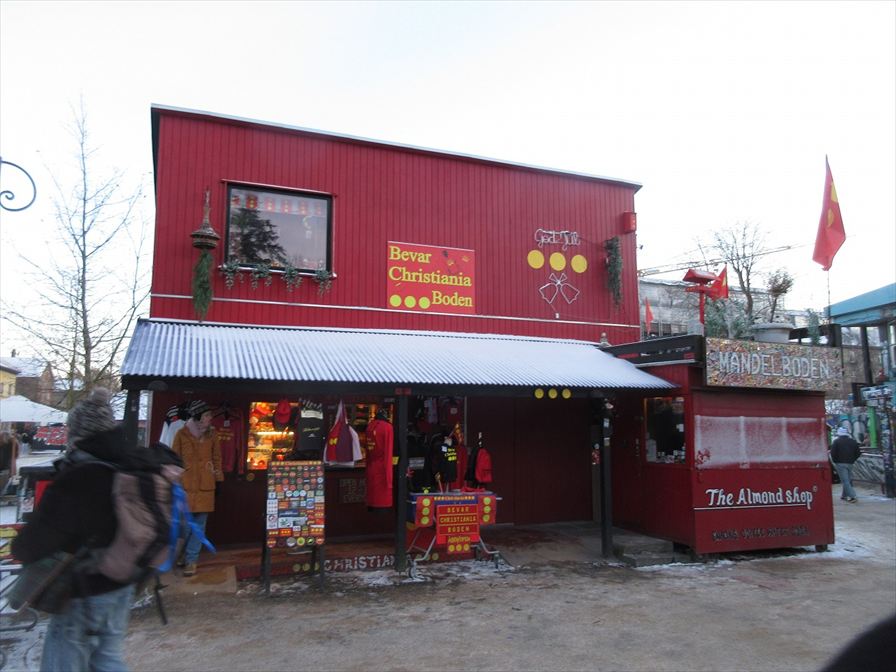
A guide gave us an explanation next to these stalls. Marijuana mainly comes from Morocco, and since marijuana is illegal, they try to hide it from the police (police means Danish police outside of Christiania). As I looked at the stalls while listening to the guide’s explanation, I saw a scene where a transaction was taking place.
Actually, I walked around the site before joining the tour, and when I got to this point just before “Pusher Street”, I felt a change in the atmosphere and turned back. It would be wise to have a guide at this place.
Please note that photography prohibited on Pusher Street. There was a sign painted on the wall of the building next to it prohibiting photography. According to the guide’s explanation, Christiania resident does not run this stall.
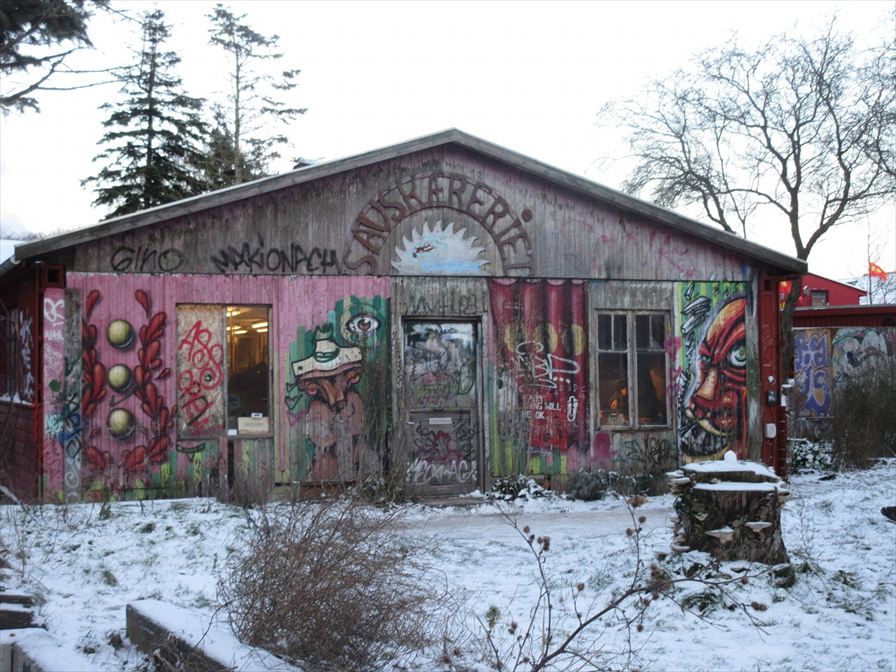
Afterwards, I walked to the back of the street and found two uniformed police officers standing in front of a cafe stand a few dozen meters from Pusher Street, talking to a person who appeared to be a resident. When I saw this scene, I thought, I see. It is what we call, “knowing, but not punishing”.
After that, I went around the premises. Souvenir shops, places selling recycled goods, restaurants, places selling alcohol, cafe, places selling artists’ works, etc. In short, there are facilities in Christiania to make a life.
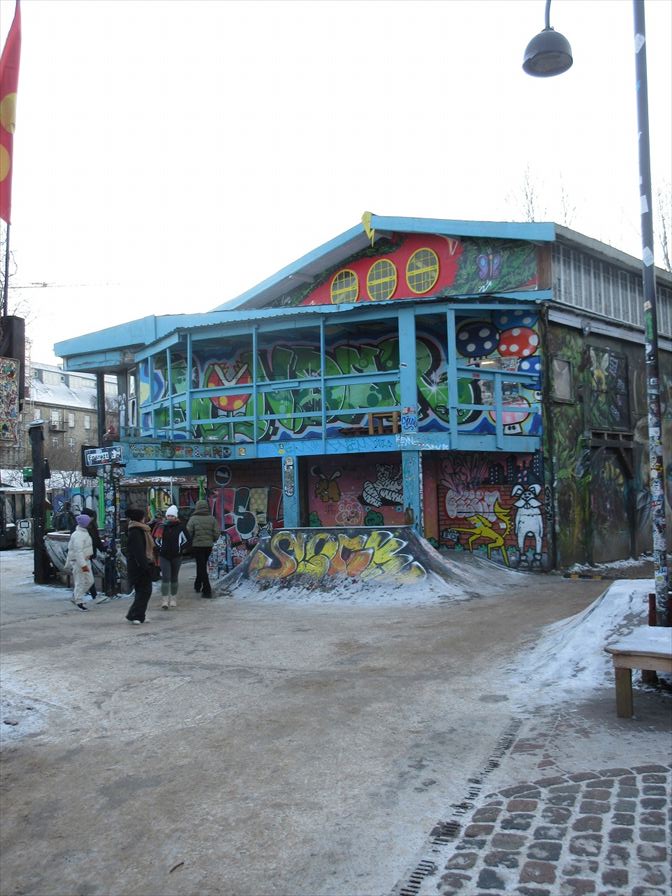
There is an old building on the premises, and the back faces the canal. When walking to the canal, I could see the other side. The Christiania site extends to the opposite bank of the canal. The guide introduces a nursery school next to a canal. Atmosphere around looks like a peaceful rural landscape.

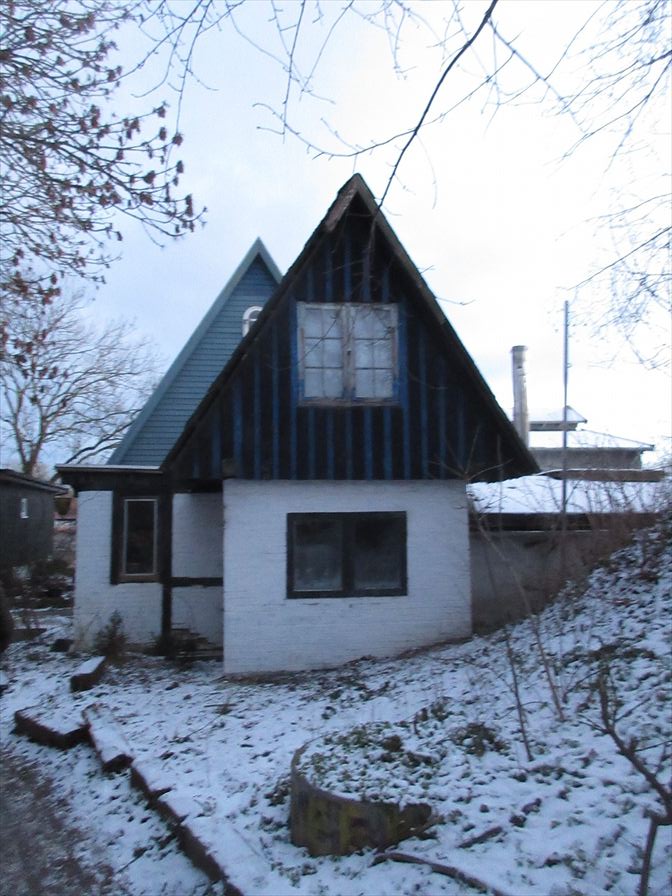
The guide was a woman, probably in her 60s or 70s. Since orientals might be rare, she asked me “where are you from”? Then we talked about the earthquake that happened in Japan very recently. She said that she has a friend living in the north of Japan.
When looking at the homepage, I understand the spirit of this autonomous region. The autonomous region divides into 14 regions, and area meetings held in each region, and community meetings held throughout Christiania to make decisions. All residents can express their opinions, which means that a direct democracy system adopted in a flat system. I guess it feels like a commune built by hippies that has grown larger.
At the end of the homepage, there was a statement expressing distrust towards the Danish government.
https://www.christiania.org/info/pages-in-english
My impression from participating in the tour and walking around while listening to the stories is that a community exists. This is probably a place where the residents live according to a scheme that they have built themselves. If looking at it from another perspective, it is the same as companies, schools, and organizations that exist in the world, and if they are doing something that is not morally wrong, there is no need to intervene.
The sale of marijuana on Pusher Street may be controversial, but there are places where marijuana is legal in the world, and if the sale of marijuana does not cause problems, there is no particular need to eliminate it.
I think it would be fine if the structure was such that people living in the community could leave the community when they wanted to, and people from outside who wanted to join could join. What we can understand from the above message of Christiania is that the society we live functions based on the logic of interests for profit and loss relationships, and a society that functions based on these relationships might be not achieving the goals it is aiming for.
Visited in 2024.
Basic Information
■ Name : Christiania
■ Address : Copenhagen, Denmark
■ Homepage
(Christiania homepage)
https://www.christiania.org/
(Page with information about guided tours)
https://www.visitcopenhagen.com/copenhagen/planning/christiania-gdk957761
(Loppen)
https://loppen.dk/
■ Others
・For guided tours, please refer to the above website. >> Every day in summer, only on weekends other than that. From 3pm. Information may change, so please check the website and other sites to obtain the latest information.
・Photography allowed on the premises except for Pusher Street. However, you should probably stop taking pictures with large cameras. No one on the tour was taking photos. Although it is not limited to this place, respect the local people is essential.
・Restroom locats in the building to gather at first (3rd floor). There are some on the premises, but closed and the atmosphere was not good, so it would be wise to avoid them.